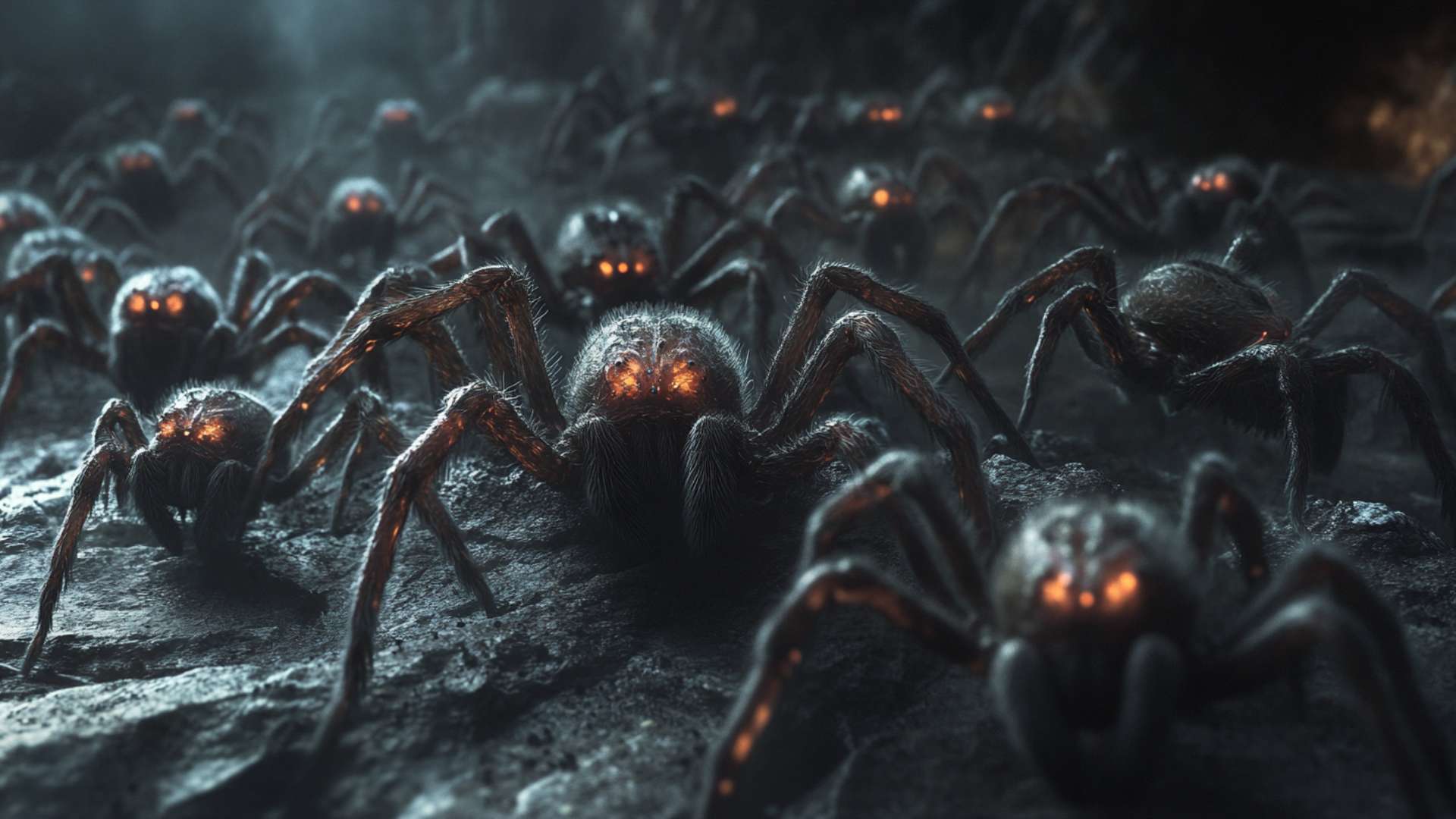Spiders, with their eight legs and intricate webs, have long captivated the human imagination. These remarkable creatures belong to the class Arachnida and are known for their predatory nature.
Among the millions of species that inhabit our planet, spiders have adapted to various environments, making them a ubiquitous presence in our lives. From the common house spiders that stealthily maneuver behind furniture to black widow spiders, the infamous black widow spider lurking in dark corners, their diversity is both awe-inspiring and captivating.
Discover Our Expert Spider Control and Extermination Solutions! Explore how our professional spider control and extermination services can efficiently tackle your spider infestation. Click to find out more about our specialized spider control and extermination services!
Unraveling the Importance of Understanding Spider Diet

As we delve into the world of spiders, it becomes apparent that comprehending their diet and feeding habits is crucial for several reasons. First and foremost, gaining insight into what drives these arachnids’ dietary preferences allows us to better understand their role in ecosystems.
By consuming vast quantities of insects such as clothes moths or even larger prey like dead animals or giant cockroaches, spiders help regulate populations of potential pests while maintaining a delicate balance within nature. While it is commonly believed that all spiders consume insects exclusively as part of their diet, this assumption does not encompass the entire arachnid kingdom.
Not all spiders rely solely on a diet consisting solely of certain spider species; some have shown remarkable adaptability by actively hunting other arthropods or even small vertebrates. For instance, running spiders such as wolf spiders can eat giant cockroaches and with gusto while widow spiders prefer smaller prey like German cockroaches.
What Do Jumping Spiders Eat? Jumping spiders are fascinating creatures with diverse diets. These agile arachnids primarily feed on insects, making them important pest controllers. To learn more about the dietary habits of jumping spiders, delve into our comprehensive guide on what jumping spiders eat.
Do Spiders Eat Bed Bugs? Curious about whether spiders are natural predators of bed bugs? Discover the truth about spiders’ appetite for these troublesome pests in our informative article on spiders eating bed bugs.
Do Spiders Eat Stink Bugs? Stink bugs can be a nuisance, but do spiders find them tasty? Explore the interactions between spiders and stink bugs in this detailed examination of spiders eating stink bugs.
Do Spiders Eat Ticks? Ticks can carry diseases, so it’s crucial to know if spiders can help control their population. Uncover whether spiders include ticks in their menu in this insightful piece on spiders eating ticks.
Do Spiders Eat Butterflies? Butterflies are colorful and graceful, but are they on the menu for spiders? Find out if spiders target butterflies as part of their diet in our article on spiders eating butterflies.
Do Spiders Eat Termites? Termites can wreak havoc, but can spiders be your allies in keeping them at bay? Learn about the role of spiders in termite control in our article on spiders eating termites.
Do Spiders Eat Bees? Bees are essential pollinators, but are they at risk from spider predation? Explore the relationship between spiders and bees in this article on spiders eating bees.
Do Spiders Eat Ants? Ants are common household pests. Discover if spiders play a role in controlling ant populations and how they interact with these insects in our article on spiders eating ants.
Do Spiders Kill Cockroaches? Cockroaches are notorious pests. Find out if spiders are effective cockroach hunters and how they contribute to pest management in our article on spiders killing cockroaches.
The Web-Woven Tapestry of Spider Feeding
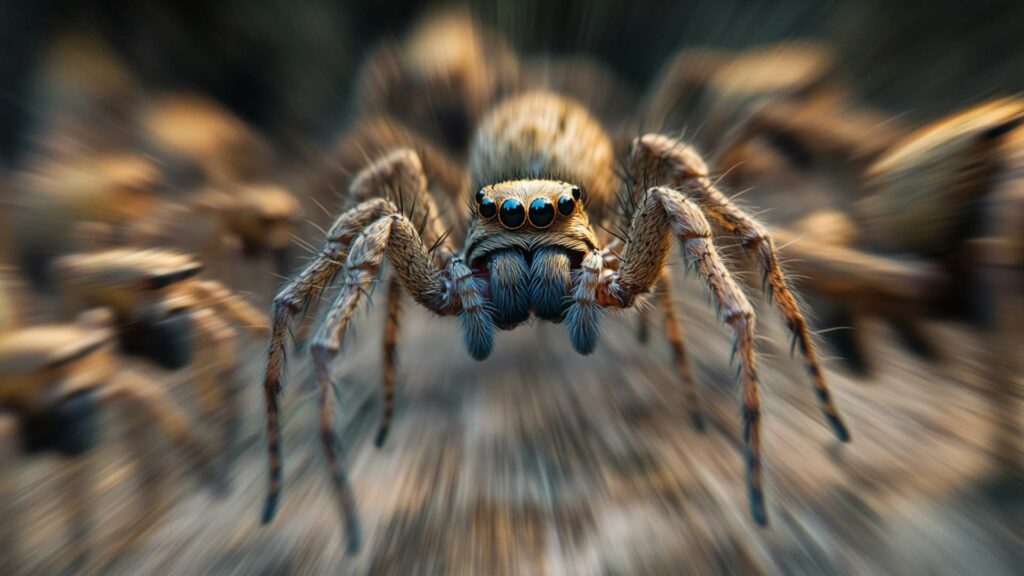
Amongst these intriguing feeding habits lies an array of fascinating hunting techniques employed by various spider species. The skilled architects among them construct elaborate webs designed to capture unsuspecting prey. These intricately spun structures can vary from the classic orb webs that snare flying insects to the funnel-shaped webs used by ambush-style hunters.
Additionally, sheet webs, often found on the ground, provide an effective means of capturing prey. Web-building spiders not only excel in constructing elaborate traps but also display remarkable efficiency in maintaining and utilizing their webs for feeding purposes.
By recycling silk for web repair and diligently cleaning debris from their intricate constructions, these spiders ensure optimal effectiveness when capturing prey. They employ a range of strategies to seize their victims, including using vibrations as an early warning system and subduing prey with a venomous bite.
Whether it be active hunters or those that rely on specialized diets, many spider species have developed unique methods to ensure successful feeding. Active predators like jumping spiders exhibit stealthy approaches to stalk and pounce on unsuspecting prey.
These agile hunters possess adaptations for a silent approach and employ various tactics to immobilize larger targets. Exploring the diverse world of wolf spider, diet and feeding habits reveals not only the intricacies of these fascinating creatures but also sheds light on their vital role within ecosystems.
By understanding their dietary preferences, we gain insight into how they contribute to pest control while maintaining ecological balance. Furthermore, examining their hunting techniques allows us to appreciate the remarkable adaptations that have evolved over time.
So let us embark on this captivating journey into the depths of spider dining preferences and unravel a world both delicate and awe-inspiring. Continued in Section 2: General Spider Diet
General Spider Diet
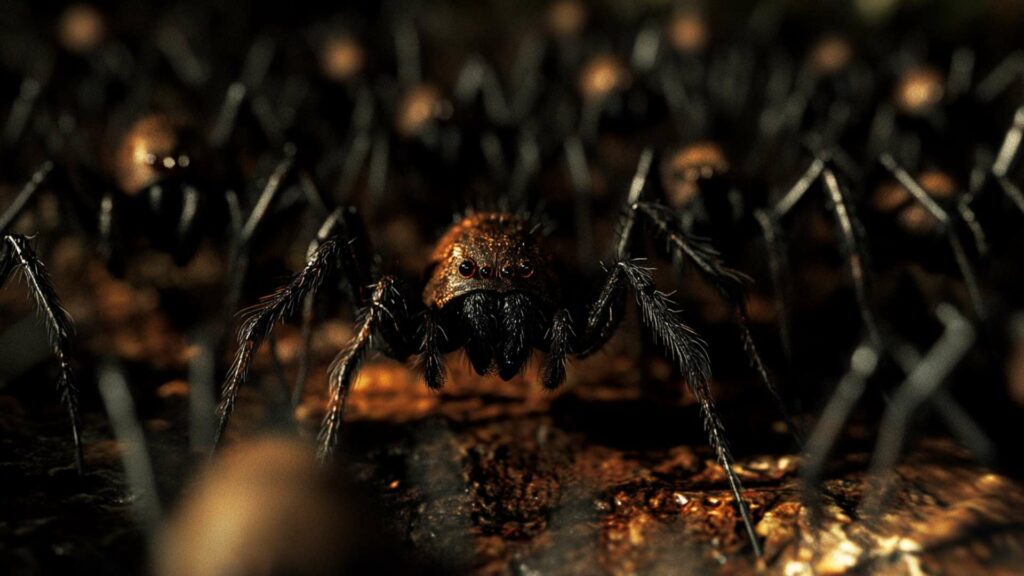
Classification of spiders as carnivorous predators
Spiders, those marvelous eight-legged arachnids that have fascinated both scientists and arachnophiles alike, are classified as carnivorous predators. Their diet primarily consists of other living organisms, making them an essential part of the natural food chain.
Within the animal kingdom, spiders belong to the class Arachnida and order Araneae. While some may associate spiders with insects, they actually belong to a distinct group called arthropods.
Main food sources for spiders
When it comes to feeding habits, spiders exhibit remarkable variety. The vast majority of spider species rely heavily on insects and other arthropods as their primary source of sustenance. This includes small insects like flies, mosquitoes, ants, beetles, and even cockroaches.
Yes, you heard it correctly – some spiders do eat cockroaches! In fact, certain types of house spiders such as widow spiders and brown recluse spiders are known to prey on these resilient pests.
In contrast to their preference for smaller prey items like cockroaches tiny spiders and other insects, larger spider species have been observed feeding on small vertebrates on occasion. These creatures can include lizards or even birds that mistakenly find themselves tangled in a web spun by a particularly adept spider.
To add another intriguing dimension to their dietary repertoire is the phenomenon known as cannibalism among certain spider populations. This behavior emerges when resources are scarce or during territorial disputes between individuals within the same species.
Under such circumstances, unsuspecting or weaker members may fall victim to their own kind’s predatory instincts. Most spiders engage in carnivorous predation with varying preferences depending on their size and habitat niche.
While they primarily feed on insects and other arthropods like flies or on unsuspecting insects, such as ants, caught in intricately woven webs or trapped by their stealthy hunting methods, some species have been observed consuming small vertebrates and even resorting to cannibalism in exceptional circumstances. This wide-ranging diet makes spiders an integral part of the ecosystem and a natural pest control method, regulating populations of various insects including cockroaches.
Hunting Techniques
Spiders, with their diverse range of species and habitats, have evolved a variety of hunting techniques to secure their next meal. From the intricate construction of webs to the stealthy stalking of prey, these arachnids demonstrate remarkable adaptability in capturing their desired sustenance. Understanding the hunting techniques employed by spiders provides us with insights into their remarkable predatory abilities and sheds light on the intricacies of their feeding habits.
Webs as Efficient Trapping Mechanisms
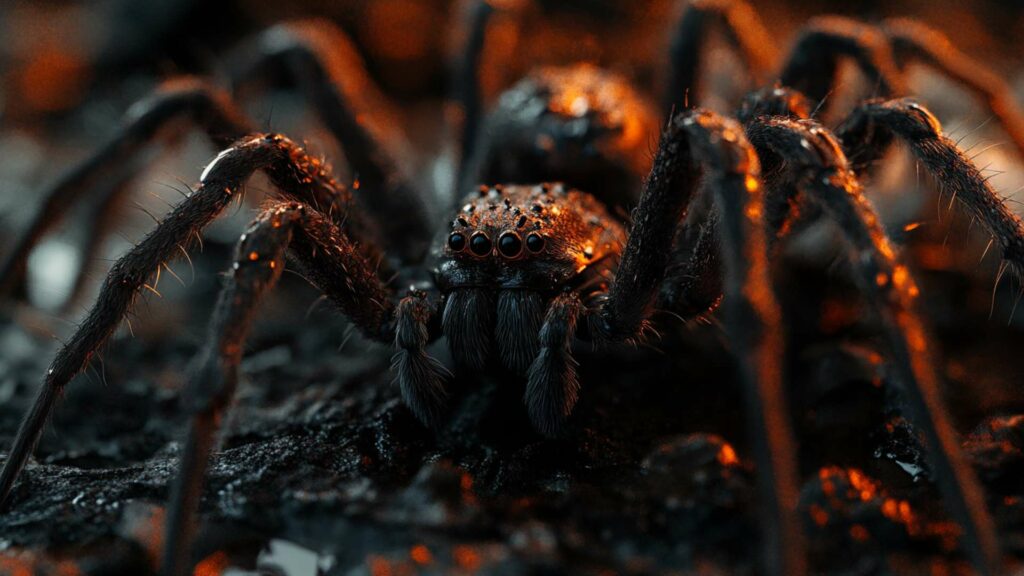
One of the most well-known hunting strategies among spiders involves the construction of intricate webs. These silken structures serve as efficient trapping mechanisms that allow spiders to ensnare unsuspecting prey. The architecture and design of these webs vary across different spider species, each tailored to capture specific types of quarry.
Orb Webs and Their Role in Capturing Flying Insects
Orb webs are perhaps the most recognizable form of spider web due to their characteristic circular shape. These delicate creations are crafted by orb-weaving spiders such as garden spiders (Araneidae family) or golden silk orb-weavers (Nephilidae family).
Suspended between trees or bushes, these intricate webs are designed to intercept flying insects that unwittingly fly into them. Upon detecting vibrations caused by an unfortunate insect landing on its web, the spider rushes towards its prey with lightning speed.
Using venomous fangs, it swiftly immobilizes its victim before proceeding to liquefy its internal organs for easy consumption. This effective method ensures a steady supply of nourishment for these skilled aerial hunters.
Funnel Webs and Their Ambush-Style Hunting Strategy
A contrasting hunting strategy is employed by funnel-web spiders like wolf spiders (Lycosidae family) or the hobo spider spiders (Eratigena agrestis). Rather than weaving elaborate webs, these hunters construct funnel-shaped retreats in crevices or burrows, where they patiently await their prey. Using their keen sense of vibration perception, funnel-web spiders detect the movement of potential prey, primarily consisting of ground-dwelling insects like cockroaches and grasshoppers.
With lightning-fast reflexes, they ambush their victims as soon as they come within striking distance. This stealthy approach allows them to overpower larger prey and consume them at their leisure.
Sheet Webs and Their Ground-Dwelling Prey Capture Method
Sheet webs are yet another variation in the extensive repertoire of spider web designs. These horizontal sheet-like structures are often constructed by spider species such as house spiders (Tegenaria domestica) or brown recluse spiders (Loxosceles reclusa). Positioned close to the ground, these webs target crawling insects and other small arthropods that traverse the area.
As unsuspecting prey ambles across the web’s surface, it triggers a series of vibrations that alert the spider to its presence. The arachnid swiftly immobilizes its quarry using venomous bites before wrapping it in silk for later consumption.
This methodical approach ensures that even ground-dwelling prey falls victim to the spider’s formidable hunting skills. Spiders employ a wide array of hunting techniques suited to their specific ecological niches and dietary requirements.
Whether through intricate webs designed to trap prey capture flying insects or through stealthy ambushing strategies targeting ground-dwelling prey, these remarkable arachnids showcase their adaptability and predatory prowess. Understanding these varied hunting techniques illuminates not only the intricacies of a spider’s diet but also highlights the vital role these creatures play in maintaining balance within ecosystems by controlling populations of other insect species like cockroaches or house pests.
Web-building Spiders’ Feeding Habits
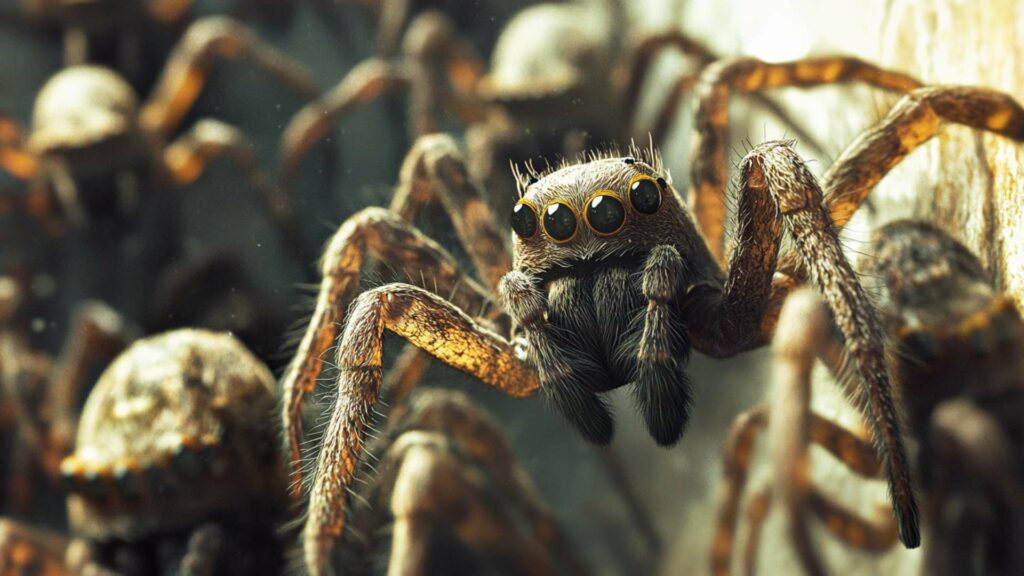
Web maintenance to ensure successful feeding
Web-building spiders are renowned for their intricate and remarkably efficient trapping mechanisms, comprising an array of web types tailored to different prey-catching strategies. However, the success of these webs heavily relies on regular maintenance. To ensure optimal feeding opportunities, web-building spiders engage in meticulous upkeep routines.
One vital aspect of web maintenance is the recycling of silk for ongoing repairs. By selectively dismantling sections that have become damaged or ensnared with debris, spiders can restore structural integrity and maximize their chances of successfully capturing live prey.
Cleaning debris from the web
The accumulation of debris on a spider’s web can impede its functionality and hinder effective prey capture. Consequently, web-building spiders demonstrate an inherent instinct to keep their webs clean and free from unwanted particles.
Using agile legs and specialized appendages called leg combs, they meticulously comb through the sticky strands of spin webs, removing any foreign matter that may compromise their trapping efficiency. This fastidious cleaning behavior ensures that the webs remain pristine and fully functional for capturing small insects—common house spiders understand that maintaining a clean hunting ground is vital.
Capturing prey in the web
Once a spider’s meticulously maintained web has successfully entrapped live prey, it capitalizes on this opportunity by employing various techniques to secure its meal promptly. Web vibrations serve as an early warning system for incoming prey. When a spider senses vibrations caused by struggling or trapped insects, it swiftly responds by rushing towards the ensnared creature while simultaneously reinforcing nearby silk threads to prevent any escape attempts.
Subduing prey with venomous bites
With its target firmly within reach after capturing it within its sticky silken snare, a spider must now neutralize resistance quickly before proceeding with feeding. Employing venomous bites, spiders paralyze their prey and often inject digestive enzymes to begin the process of liquefying internal tissues, facilitating subsequent consumption. While venom composition varies among different spider species, it consistently serves the dual purpose of subduing prey and initiating digestion.
This venom-induced paralysis ensures that struggling prey does not damage the silk threads or escape before being fully consumed. Web-building spiders exemplify the marvels of nature’s engineering prowess with their finely crafted webs and elaborate feeding strategies.
By diligently maintaining their webs, recycling silk for repairs, removing debris that impedes functionality, detecting vibrations as an early warning system, and subduing prey with potent venomous bites, these arachnids effectively control pests in their vicinity while securing nourishment for their own sustenance. Understanding the intricacies of spider diet and feeding habits sheds light on the vital roles they play in ecosystems by keeping populations of common household pests such as small insects and other spiders in your home in check.
Active Hunters’ Feeding Habits
Stalking and Pouncing on Prey
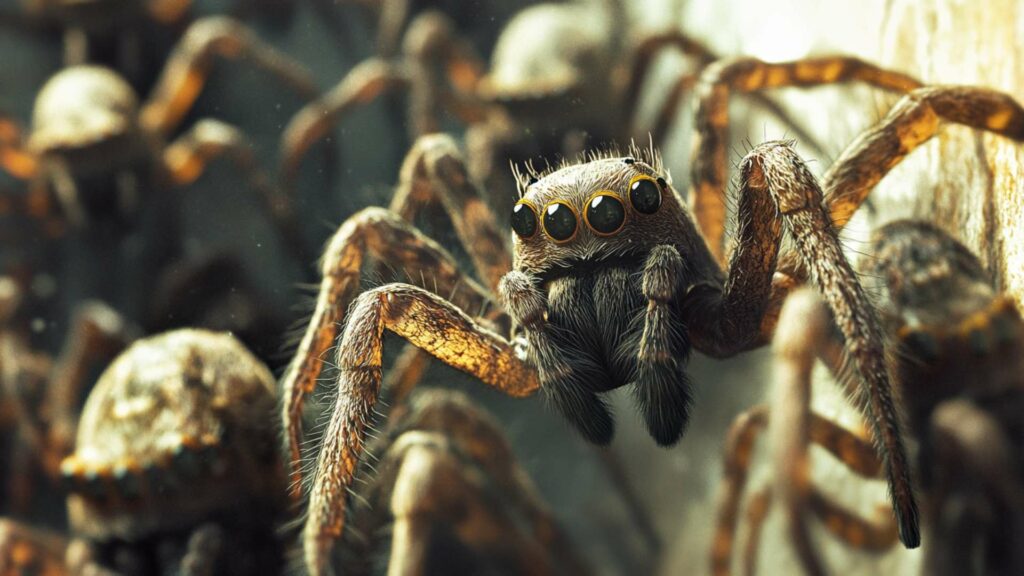
When it comes to obtaining sustenance, some spiders have evolved into skilled active hunters. Unlike their web-building counterparts, these agile predators rely on their keen senses and physical prowess to secure a meal. Stalking and pouncing on prey is a common hunting strategy employed by various spider species.
This method involves jumping spiders patiently observing the surroundings and skillfully maneuvering towards unsuspecting victims before launching a swift attack. To execute successful stalking, spiders adapt their behavior in accordance with the particularities of their environment.
For example, nocturnal hunters such as wolf spiders employ stealthy movements under cover of darkness, exploiting their superior night vision to surprise prey like fruit flies or clothes moths. Conversely, diurnal hunters like hobo spiders or American house spiders adapt to daylight conditions, employing camouflage techniques that allow them to blend seamlessly into their surroundings while waiting for opportune moments to strike.
Adaptations for Stealthy Approach
Active hunting requires careful planning and precise execution. In order to facilitate the element of surprise during stalking, certain species of spiders have developed remarkable adaptations for a stealthy approach. These adaptations can manifest in various ways depending on the particular ecological niche occupied by each spider species.
One striking example is the brown recluse spider’s ability to remain virtually invisible due to its cryptic coloration that matches surrounding environments with uncanny precision. This camouflaging effect allows it to seamlessly blend in with its habitat, avoiding detection by both unsuspecting prey like brown banded roaches and potential predators alike.
Furthermore, some active hunters possess fine hairs or specialized sensors on their legs that aid in detecting vibrations caused by nearby movements. By relying on these intricate sensory mechanisms, spiders can respond with lightning-fast reflexes when approaching potential prey.
Strategies to Immobilize Larger Prey
When it comes to capturing larger prey dead spiders, active hunters must employ strategies that enable them to immobilize and eventually subdue their victims. While smaller insects may be effortlessly overpowered, tackling larger prey necessitates a more tactical approach. One such strategy involves swift and precise venomous bites delivered by spiders like the black widow spider.
The potent neurotoxic venom injected by grass spider into the prey’s body rapidly incapacitates it, rendering it unable to resist. In addition to venomous bites, some spiders employ silk threads to further restrict the movements of struggling prey.
This ensures that the captured insect remains entangled and helpless until the spider is ready for its meal. Active hunters in the spider world employ a range of fascinating feeding habits to secure their sustenance.
By stalking and pouncing on unsuspecting prey, these agile predators utilize adaptations for stealthy approaches that allow them to remain undetected until they strike with remarkable precision. Moreover, when faced with larger prey, they resort to strategies involving venomous bites and silk threads to immobilize their victims effectively.
Through these specialized techniques, spiders demonstrate their ability to adapt and thrive in diverse ecosystems while serving as an essential component of natural pest control mechanisms.
Specialized Diets among Spiders
Pollen-eating spiders
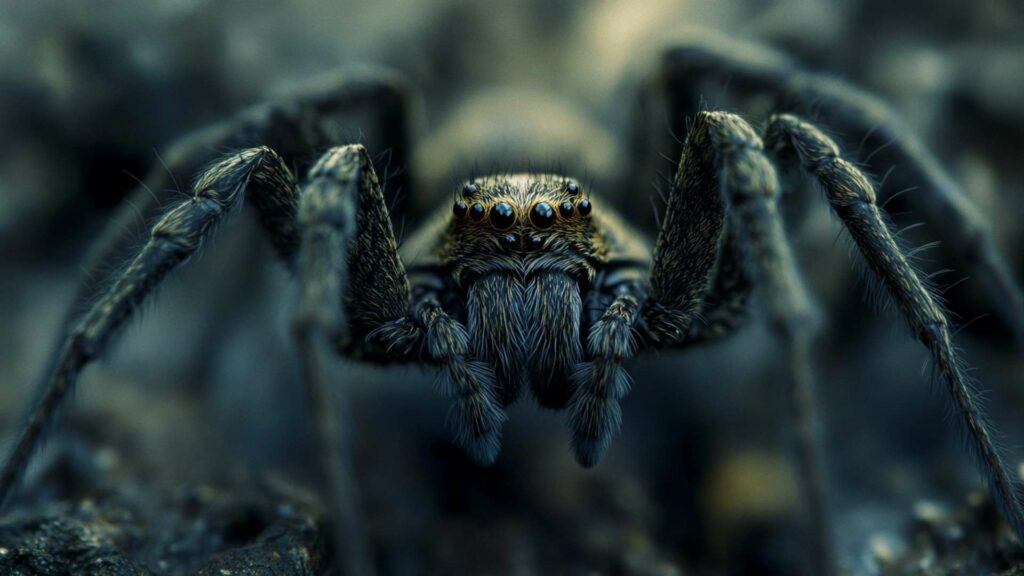
Pollen-eating spiders, a unique group of arachnids, have evolved fascinating adaptations that allow them to consume plant matter. While the majority of spiders are carnivorous predators, these specialized spiders have developed modified mouthparts specifically suited for their herbivorous diet.
The most common adaptation observed in pollen-eating spiders is the presence of elongated and serrated mouthparts resembling tiny brushes. These structures aid in effectively collecting pollen grains from flowers.
Adaptations for consuming plant matter
Apart from their specialized mouthparts, pollen-eating spiders also possess altered digestive systems. Their midgut has adapted to accommodate the breakdown and absorption of plant nutrients. Additionally, some species exhibit an increased number of microbes within their gut that aid in digesting plant material efficiently.
Benefits of pollen consumption
The consumption of pollen offers several advantages to these remarkable arachnids. Firstly, by feeding on pollen-rich flowers, these spiders can obtain essential nutrients not commonly found in their typical prey items like small insects or other arthropods.
Additionally, pollen is known to be a rich source of proteins and carbohydrates necessary for their growth and reproduction. As such, by diversifying their diet to include plants, these spiders increase their chances of survival and reproductive success.
Nectar-feeding spiders
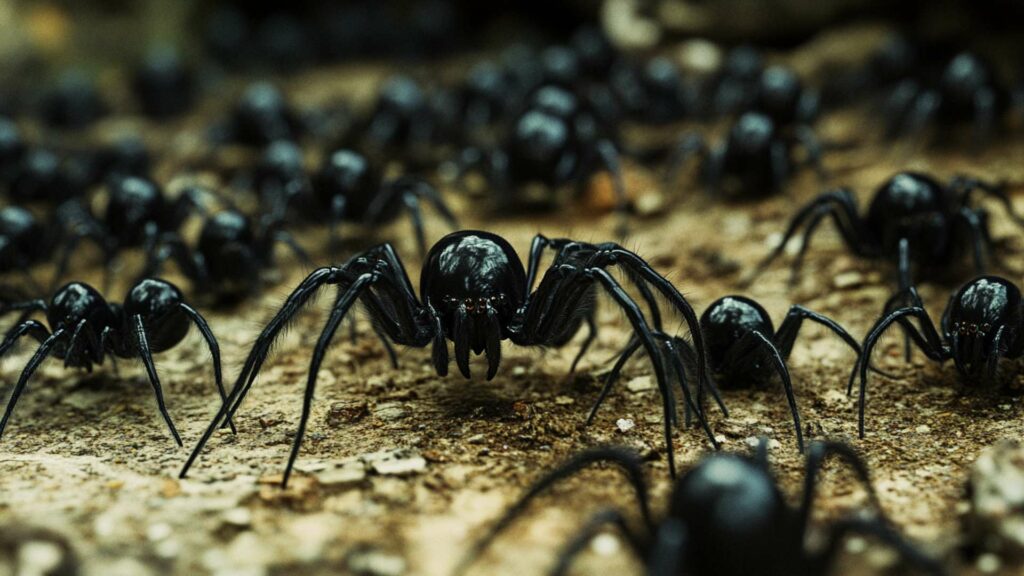
Nectar-feeding spiders have evolved an intriguing strategy to supplement their diets through the consumption of floral nectar. These ingenious arachnids have developed specialized adaptations that enable them to attract pollinators and obtain this nutritious fluid.
Attracting pollinators to obtain nectar
To lure unsuspecting pollinators such as bees or butterflies, nectar-feeding spiders employ various strategies ranging from bright colors to intricate floral mimicry. Some species have evolved unique body shapes, resembling flower petals or enticing nectar-producing insects, which attracts their desired pollinators. Once the pollinator is close enough, the spider cleverly extracts the nectar using its modified mouthparts.
Impact on plant-pollinator relationships
The interaction between nectar-feeding spiders and pollinators can have both positive and negative impacts on plant-pollinator relationships. On one hand, these spiders can enhance cross-pollination by acting as intermediaries between flowers of the same species.
On the other hand, they may reduce pollen transfer efficiency if they consume a significant amount of available nectar. However, studies suggest that the overall impact of nectar-feeding spiders on plant reproduction remains complex and varies depending on several factors such as spider density and flower availability.
Sap-feeding spiders
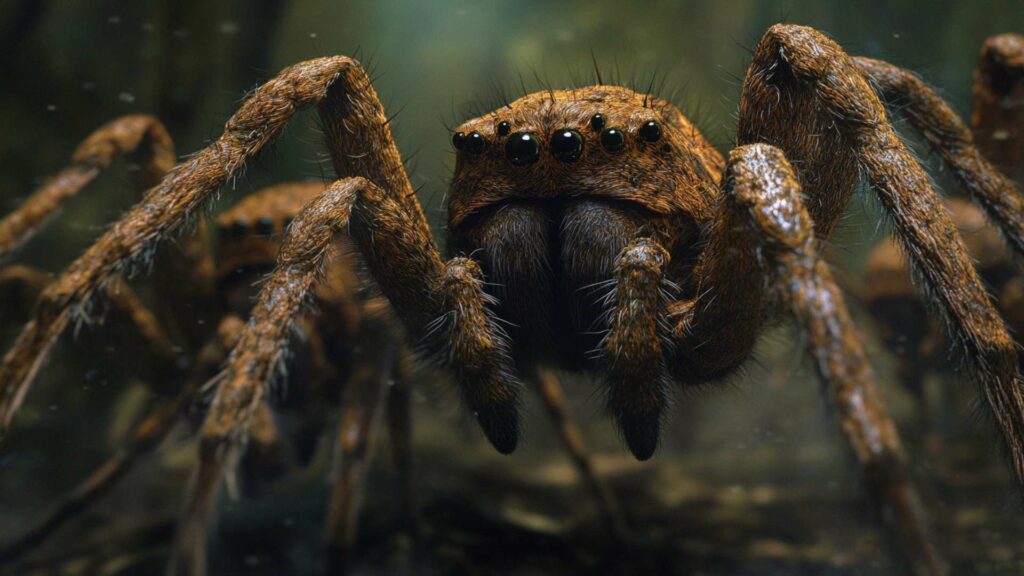
Sap-feeding spiders are an intriguing group that has developed remarkable adaptations to exploit sap as a food source. Sap is a nutrient-rich fluid found in plants’ vascular tissues, making it an attractive resource for these specialized arachnids.
Extraction methods for sap
These resourceful spiders employ various techniques to access sap. Some species puncture plant tissues with their fangs or specialized mouthparts, while others target existing wounds caused by other insects or physical damage.
Once access is gained, they utilize capillary action to extract and ingest this sugary substance. Concluding our exploration of specialized diets among spiders reveals nature’s incredible adaptability in these arachnids’ feeding habits.
While most spiders are well-known carnivorous predators targeting small insects or fellow arthropods, some have taken unique evolutionary paths leading them towards pollen consumption, nectar feeding, or sap extraction from plants. These adaptations not only broaden their dietary options but also contribute to their survival and reproductive success.
By venturing beyond the realms of conventional house spider’ diets, these arachnids showcase the remarkable diversity and resourcefulness found within the natural world. So, while spiders may often be associated with consuming house spiders eat cockroaches or other household pests, their specialized diets remind us that they too have their own niches in the complex web of life.
Frequently Asked Questions:
Spider feeding and hydration needs vary by species and environment.
Spiders are primarily carnivorous feeders.
Spiders can survive weeks to months without food, depending on the species.
Daily food intake for a spider is typically small, often just a single prey item.

